How Fmcg Company Salesman Succeeds In Selling In Super Markets Today?
FMCG’ – Fast Moving Consumer Goods – covers everything from toiletries and cosmetics to TV’s and hi-fi’s. Therefore, the choice and variety of FMCG Sales jobs is also very wide
You can work at every level from Sales Representative or Executive right through to Sales Director.
Duties and responsibilities in a Fast-Moving Consumer Goods (FMCG) Sales job
As a Sales Representative or ‘Rep’, it would be your job to sell your company’s products or services. You would be responsible for finding and winning new customers, as well as looking after existing customer accounts.
You could specialise in one area of consumer goods, such as toiletries or sports goods. Depending on your market, your customers might be wholesalers, shops, businesses, manufacturers or individuals within your specific geographical area.

Your day-to-day tasks are likely to include:
- Keeping in contact with existing customers in person and by phone
- Making appointments with and meeting new customers
- Agreeing sales, prices, contracts and payments
- Meeting sales targets
- Promoting new products and any special deals
- Advising customers about delivery schedules and after-sales service
- Recording orders and sending details to the sales office
- Giving feedback on sales trends
Reasons for working in Fast-Moving Consumer Goods (FMCG) Sales
When not on the road, you could be based in a local or regional sales office, or you could work from home. Given the travelling, a driving licence is important.
You could work for a huge range of companies all over the UK. Jobs may be advertised in the local and national press, publications for a particular industry, in Jobcentre Plus and recruitment agencies.
With experience and a good track record, you could progress to a larger sales territory or more important accounts. You could also be promoted to Sales Team Leader or Area or National Sales Manager.
Changing sectors and employers is also a good tactic for career advancement, as FMCG sales skills are fairly transferable.
How much do you make in Fast-Moving Consumer Goods (FMCG) Sales?
Figures are intended as a guideline only.
- Basic starting salaries can be between Rs15,000 and Rs 40,000 a month
- With experience this can rise to between Rs 65,000 and Rs 140,000
- Top salaries can reach Rs250,000 or more
Many companies offer a basic salary plus commission, although some FMCG sales reps earn commission only.
Job adverts usually show the potential total salary including commission, known as ‘on-target earnings’ or OTE.
Salaries may also include company car, petrol allowance and bonus schemes.
Reasons for working in Fast-Moving Consumer Goods (FMCG) Sales.
You may often choose your own working hours, as long as you meet sales targets.

Hardest part of working in Fast-Moving Consumer Goods (FMCG) Sales.
However, your hours could be long and irregular, with a lot of travelling time, possibly abroad.

What qualifications do you need to work in Fast-Moving Consumer Goods (FMCG) Sales?
You’ll need a good general education, but your sales skills and experience count for more than your formal qualifications.
If you’re new to sales, you could take an introductory qualification such as the Institute of Sales and Marketing Management (ISMM) Level 2 Award in Basic Sales Skills or Level 2 Certificate in Sales and Marketing.
Alternatively, you could start as an Administrator in a sales office. It also may help to have some previous experience in retailing or customer service.
You may be able to get into FMCG sales through an apprenticeship scheme. To find out more, visit www.apprenticeships.org.uk.
Most employers provide in-house training on their products, sales techniques and sales administration systems. You will also develop your general sales skills on the job.
Skills needed to work in Fast-Moving Consumer Goods (FMCG) Sales?

To succeed at FMCG sales, you’ll need:
- Excellent sales and negotiation skills
- Good communication and ‘people skills’
- Confidence, motivation and determination
- The ability to work well on your own and also as part of a team
- Good organisational and time management skills
- The ability to deal with rejection
- Attention to detail
- The ability to develop in-depth knowledge about your products and markets
- Good business sense and a professional manner
Search for Fast-Moving Consumer Goods (FMCG) Sales jobs on Totaljobs.

More customers – good sales and more happy customers – better sales.
How to manage a supermarket successfully is a question running on top of all owners?
If the cash in-flow deteriorates, you better figure out what is wrong fast. The key to success here in boosting your supermarket sales is to provide the customer, an experience that he/she will cherish and talk about.
This will ensure repeat business and also bring in new customers through referrals.
10 steps for you on how to develop a grocery business and how to manage a supermarket successfully
1. Know your customer:
Make it a habit of giving your customers what they want, they will do business and buy from you.
The services you provide should reflect your customer’s needs and wants to let them talk about you in your city which is an effective supermarket marketing idea.
Think from your customer’s perspective; show, sell and say things that interest them, not just what interests you.
So start knowing your customers that’s how you start to improve the supermarket business. It is a crucial factor that determines whether you succeed or not.
So, start knowing your customer. It is a crucial factor that determines whether or not you succeed.
2. Offer suggestions:

People respond best when they are offered various options to choose from.
Train your salesmen to build a rapport with a customer, understand their needs, and suggest the offers and benefits in your store.
Start using a good CRM to manage the purchase history of a customer.
You can start suggesting products or giving options to customers while they are at the counter.
3. Reduce wait time at counters:

Long queues at billing counters are one of the biggest fears for every customer during peak hours and festive seasons.
Use these simple supermarket ideas to make the best supermarket sales at peak hours.

An effective queue buster, a mobile POS solution for the supermarket that is powerful and efficient would be the need of the hour for every growing supermarket in the market. Don’t let your customers search for your salesperson every time to enquire about the product. Use a price checker app to let your customers make informed decisions independently and faster.
4. Create combo packs:

How to improve retail sales for non-moving products? Assembling/Bundling products together as a combined offering using the demand for the primary product to sell the secondary product. Eg: A promo pack of 3 soaps at 100 INR would sell better than 1 soap at 35 INR each. The impact of bundling as a kit can be powerful. It normally leads to higher engagement and a longer life cycle for the customer.
5. Update regular customers with offers:
 Value a regular customer by giving them offers, loyalty points and notifying them ahead of a flash sale on their mobile phone. Reach out to customers via SMS and emails with your offers a week before a festival or their birthday and anniversary. This is a great supermarket marketing idea and makes it convenient for a customer to plan out a happy shopping experience.
Value a regular customer by giving them offers, loyalty points and notifying them ahead of a flash sale on their mobile phone. Reach out to customers via SMS and emails with your offers a week before a festival or their birthday and anniversary. This is a great supermarket marketing idea and makes it convenient for a customer to plan out a happy shopping experience.
6. Be Omni-Channel:

Your sales depend on the experience you deliver to your customers. Connecting with your customers from the physical to the digital world by providing a complete self-service shopping experience to a complete assisted shopping experience is an effective supermarket idea.
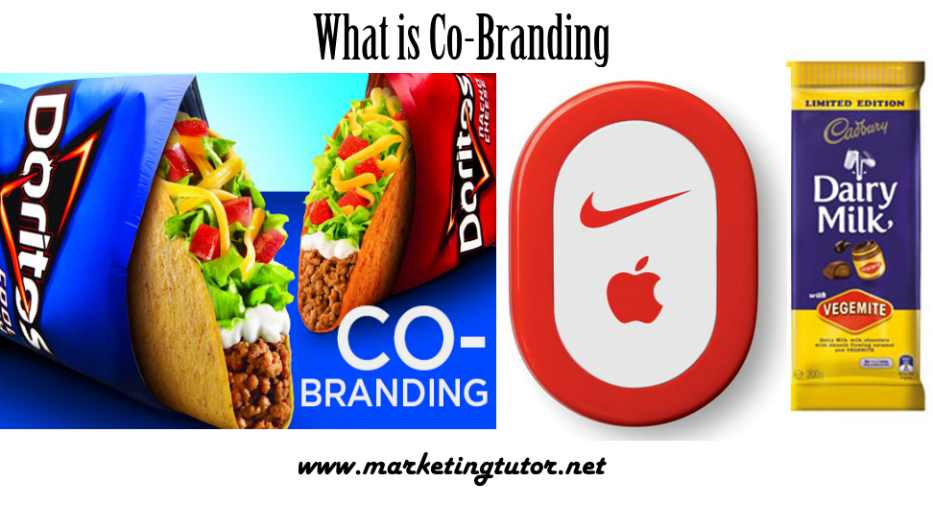
Offer exposure of multiple channels to your customers. That exposure provides convenience for your customers to browse or buy in-store, on mobile, and offline.
Such multi-channel needs to support all types of purchase behaviors from BOPIS (buy online and pick up in-store),
ROPO (Research Online and Pickup offline), BIMBO (Browse In-store in mobile and buy online) ISU (Instore Pick-up, the traditional model) to BORIS (Buy online and Return in Store).
Never make your customers wait long for deliveries, manage same-day deliveries, or faster delivery with your delivery platform.
All such is possible with a friendly ERP that provides integrations to marketplaces, online ordering, delivery platform, and payment backed up with comprehensive real-time inventory.
7. Value customer’s feedback:

Everyone wants customer feedback, but many times we fail to do the best thing that gets good feedback:
Ask if your customer has everything they need or find out comments that they would like to share. If they hesitate, give them time to give you a genuine answer before you move on to a different activity or question.
Get the best customer feedback solution which the leading supermarkets prefer MyPulse – Get Customer Feedback.
Want to know more about this?
Here are 4 ways how customer feedback can impact your business.
8. Change item locations:

Every retailer keeps working on how to increase sales in the retail grocery store without doing an additional investment.
Here is a simple trick that could improve your supermarket sales.

Keep changing the location of popular items every month or quarter so that shoppers who are motivated to buy them will have to look for them.
This is to make them pass by and notice other products, stimulating impulse buys.
You will be surprised to see how an old product becomes popular again, just because you’ve moved it to a different shelf.
9. Stay updated about your inventory stocks:

All retail stores need to manage inventory. It is your money sitting on a shelf and represents a large portion of your business investment.
The retailer who merely watches the store’s shelves can’t maintain a proper balance between the right amount of stocks and customer demand.
Manage your business operations on-the-go with the WhatsNow, the best mobile solution that lets you carry your business in your pocket.

And have complete control over your inventory with the GoSure to ensure the right stock, manage goods inward and ensure hassle-free stock picking in your store that is how you manage a supermarket successfully.
10. Go Digital:

The COVID-19 pandemic has been evident to go digital to sustain your business. As more and more shoppers are using their phones during their shopping experience to keep track of their grocery list, look up ingredients for recipes, and use digital coupons. In today’s digital world, with the emergence of wallets and cash cards, it’s high time for the shop-owners to step into the digital world and flow with the current trend. Digitized information of inventory and shelf stocks, cash, and accounts along with multiple payment options makes it an effortless check out for the shopper.
Still not convinced, read more on why investing in technology is important for a business!
Know more and better ways to increase sales in supermarkets? Please leave your comments in the section below.
Merchandising and Sampling FMCG’s

Right Product, Right Place, Right Time
Raising prices used to be the go-to strategy for retailers looking to widen their grocery store profit margins, but this practice is no longer sustainable in today’s retail landscape.
With players like Walmart, Aldi, and Lidl constantly offering bargain basement deals, other grocery stores risk losing their customers if they can’t match the prices of their competitors. Companies are realizing that to compete, they need to turn a profit in more creative ways.
In this article, we shed light on how you can use technology to do just that. Examine the points below and see how you can use them to increase your grocery store profit margins.
1. Right Product, Right Place, Right Time
The average grocery store has a whopping 40,000-50,000 SKUs. Many of the products on your floor are time-sensitive. Produce and deli goods are highly perishable, while seasonal items like Valentine’s Day chocolates need to move within a small window in order to be profitable. When they’re not in the right place at the right time, these items can be real drain on margins.
You might think this is a natural cost of being in the grocery business — and that your in-store execution problems are just part of the reality of brick-and-mortar. But today’s cutting-edge machine learning tools can crunch your POS-data to better understand local demand and capitalize on that understanding.
At CB4, we notify retail team when sales for a particular item at a specific location are failing to meet anticipated high demand. We take our insights one step farther, sending alerts to store managers to correct whatever is hindering sales and then provide feedback to corporate.
Maybe a vendor is failing to stock your beverage case with a new flavor of sparkling water. Perhaps it’s one week before Fourth of July and a brand of hot dog buns was misplaced in the stockroom, and hasn’t been replenished on the floor since. Maybe there’s a markdown on raspberry crumble cake, but the price sticker doesn’t match the promotional signage.
These are all issues that CB4 has uncovered and corrected for our grocery store partners. They are also the issues that, in aggregate across your chain, chip away at your gross profits. By helping store teams recognize and correct these issues, CB4 helps grocers deliver the right products at the right time and keeps your customers coming back for more. If you’re ready to get started, learn more about our secret sauce.
2. Tighten Up Your Supplier Policies
Inefficiencies in your supply chain are costing you sales and profits, particularly when they lead to product delays and unavailability. With grocery stores losing $75 billion because of out-of-stocks, it’s imperative that you work on tightening up your supply chain.
One way to do this is by implementing on-time, in-full (aka OTIF) policies for your suppliers. OTIF policies compel your vendors to fulfill orders efficiently, so you can get your products on the sales floor when your customers need them.
Both Walmart and Kroger have taken measures to prevent late or incomplete deliveries through OTIF policies. Kroger charges vendors $500 per day for delivers made past a two-day time frame, while Walmart fines suppliers 3% the value of each shipment that comes in late or incomplete.
Consider doing something similar with your suppliers, and for best results, use technology to streamline your processes. In Walmart’s case, the retail giant leverages big data to determine which products to stock, and then it shares those insights with its suppliers.
According to the WSJ, Walmart has been sharing key data points with vendors, including “which precise products are on shelves at any given time and why products are out of stock.” Walmart also discloses which products it plans to carry in each store and makes that information available to suppliers.
Having the ability to collect — and share — all that information keeps Walmart and its suppliers on the same page, allowing vendors to anticipate demand and fulfill orders efficiently.

3. Improve Your Private Label Strategy
It’s a known fact that private label goods are a lot more profitable, with grocery store profit margins being around 25-30% higher compared to branded products. The challenge with any private label strategy, though, is to sell high-quality products at low prices.
It’s no easy feat, but it’s doable with the right manufacturing process. As CB Insights points out, grocers can win the private label game by keeping their manufacturing lean and in-house.
Take Kroger, which brings in over $20 billion a year through its own brands. Part of what makes Kroger successful at private labels is its investment in its own manufacturing facilities. The company has more than 40 plants to process a variety of its private label items.
Data and analytics also play a key role. Some brands are turning to external partners to help. For example, CPG manufacturers like Mars are using Alibaba’s AI tool to help brands uncover hidden demand patterns that inform product development to tap into local consumer demand.
Grocery Dive reports that Kroger, on the other hand, has its own analytics firm and “collects a lot of data on its customers, helping it figure out which new items to develop and how to hone existing lines.” Some brands are turning to external partners to help. For example, CPG manufacturers like Mars are using Alibaba’s AI tool to help brands uncover hidden demand patterns that inform product development to tap into local consumer demand.
Kroger’s success highlights the importance of systems and technology when it comes to private labels. Having its own manufacturing plants enables Kroger to create quality goods at highly competitive prices, while its data and analytics can surface valuable customer insights to support product development and strategic pricing.
If you’re a grocer with a private label operation in place the only thing stopping you from duplicating Kroger’s success is mastery of your own data.
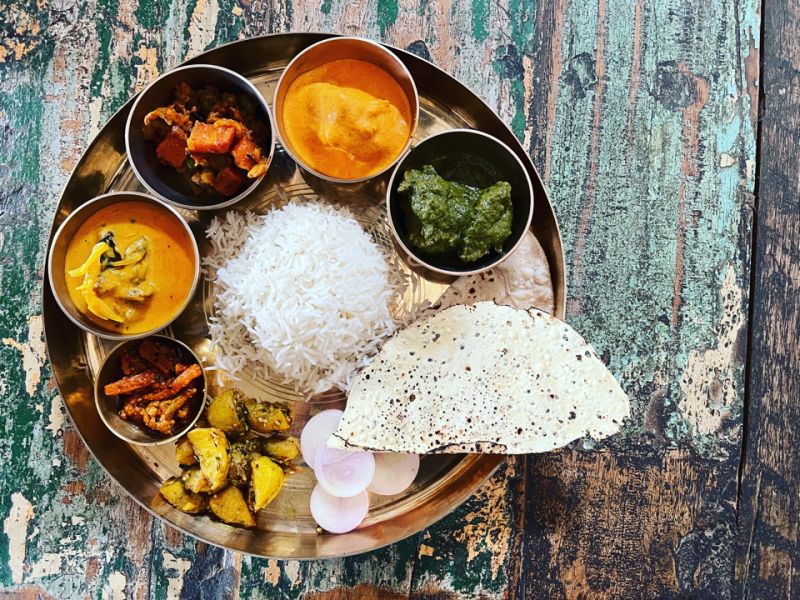
4. Consider Meal Kits
Industry saw a flurry of meal kit acquisitions and partnerships with grocers: Kroger purchased Home Chef, Albertsons bought Plated, and Gobble teamed up with Walmart.
These shouldn’t come as a surprise. From the perspective of increasing grocery store profit margins, selling meal kits makes a lot of sense. In addition to having access to ingredients, supermarkets already have an existing distribution network and a customer base to market to. By leveraging these assets, grocers can get more out of their existing customer base and widen their margins.
That being said, a meal kit program doesn’t come without challenges. This space is extremely competitive, and grocers must deliver delicious meals at affordable prices — and do it in ways that are convenient for shoppers.
Making all that happen requires technology to support services such as mobile ordering, subscription management, and automatic fulfillment. Leading meal kit providers (i.e, Blue Apron, Plated, Hello Fresh, etc.) for example, give subscribers the ability to stay on top of their meals on multiple channels, making it simple to select meals and schedule deliveries or pick-ups.
These capabilities are table stakes for meal kit providers. Therefore, if you’re looking to offer the service to your customers, see to it that you (or your meal kit partner) have the technology to support such features.
5. Prioritize over Delivery
While free shipping and same-day delivery are certainly gaining steam, buy online, pick up in-store seems to be a more popular option for consumers.
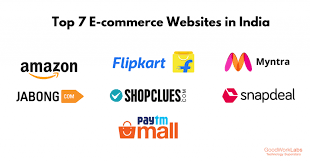
Millennials prefer click-and-collect over home delivery.
The success of your Ecom efforts also hinges on order fulfillment efficiency. Tight processes and adequate staff training are necessary to ensure that in-store pickup orders are processed on time.
The best in class retailers recognize this, and some are even turning to technology to improve efficiency.
You may not be able to deploy robots to assist with BOPIS orders, but you could look into other back-end technologies that can streamline your procedures.
6. Rethink Your Loss Leaders
Using loss leaders — i.e., items sold at a loss to drive foot traffic — is a common tactic that nearly every food retailer implements to improve grocery store profit margins. Traditional loss leaders include items like milk and eggs. It’s a classic and proven practice, but simply using old staples as loss leaders is becoming ineffective, as shoppers’ preferences around health and wellness continue to evolve.
Consumers are clearly moving more towards healthier options when it comes to staples like milk and eggs, which means grocers need to keep up and evolve their loss leader strategies to include healthy alternatives.
As RW3 puts it, “while there’s still a market for the staples, if you’re looking to attract a new crowd—especially among younger people—offering great discounts on the foods people are trying to find may make you the go-to retailer for shoppers.”
It’s important to bring up the role of technology in a grocer’s loss leader strategy. By using big data and retail analytics to analyze trends, you can determine which products to use as loss leaders.
That same data can also inform your pricing strategy. Analyzing POS transactions, basket sizes and shopper-price perceptions will enable you to determine the most optimal price points for your loss leaders.
This is critical, particularly as consumers have more pricing transparency thanks to shopping comparison apps and price matching deals. As a grocer, using technology to analyze data and adjust prices based on trends and consumer price sensitivity will allow you to stay competitive.
Retailers Words
Shoppers of today don’t just want the right products at great prices — they expect those items to be fulfilled efficiently through the right channels.
It’s a tall order, but food retailers can meet those demands and improve grocery store profit margins by leveraging technology to identify opportunities and implement the right initiatives.
Category wise Retailer Margins on FMCG brands for SuperMarkets.

The supermarket business is a low-margin industry, with the average profit margin for supermarkets typically ranging from 1 to 2 percent. However, natural, organic and gourmet food markets enjoy higher averages from 3.5 to 6 percent
If you sell a pack of Tata Salt you will earn 50 paise but if you sell say dandi or some small brand your profit is in the range of Rs 2–5.
If you are selling Britannia or parle or sunfeast bicuits you earn 3–4% on the MRP. But if you sell Bisk farm, Anmol and other good local brands you will get 6–8% on MRP.
So how is it possible to generalize the profitability.
Some retail businesses are making profits on volumes by keeping their margins lower than competitors. Some are earning profits on value by keeping maximum margins.
Super market keeps different profit margins for different products. To have cumulative profit they try to increase their sells. Hence they start marketing strategically.
“How often do you return home from the supermarket with bags full of items you had no intent on buying?”
Quite regularly, probably. It’s not just you and it’s not by accident. It’s exactly what supermarkets want you to do and as consumers we play right into their hands.
Supermarkets have decades worth of marketing theories, it’s part of their job and stores will do everything within their power to make you spend as much time and money inside their premises as possible.
So if you’re sick of spending upwards of that ‘purple note’ every time you just ‘get out for a packet of biscuit’ here is how supermarkets try and take away money out of you.
Stimulating and Enticing Discounts
We see and we rush and we get incarcerated. We go inside without giving a second thought thinking the offer may end. That’s whole strategy of Supermarkets to bring customer within the premise.
Music
All most all supermarkets play slow music. The idea is that slow music makes you take your time wandering round the store, viewing more products, and ultimately buying more.
Loyalty Cards
Loyalty cards have their advantages, without a doubt. With loyalty cards they track our spending too; what we buy and when we buy?
On Fmcg Products What are the margins of Supermarket in India?
Anywhere between 19% to 23%.
The sales and margin mix of a 23% store would look as follows ;
Category – Sales Mix. – Margin
Food. . . . . . . . . . . . . . . – 45% – 14%
Apparel. . . . . . . . . . . . . . – 35% – 35%
Home, travel, toys etc. – 10% – 28%
Electronics & Mobiles. . – 5% – 12%
Weighted Gross Margin – 23%
8 to 15 % depends on brand. Big brand means less margin .because they know…products are in demand.
And newly launched products.non branded ..give more commission .because the company know…products in less demand…if we dont give good commision then seller will not focus on our products.
Sales of Top 5 FMCG categories.
Category wise sales in % . Highest net margin contribution to Retailer.
- Grocery sales 55% is the highest amount of sales in a retail store format. The gross margin in grocery is typically 25% for dry grocery; 30% for grocery frozen food and 30% for grocery dairy.
- Produce sales typically account for 10% of the total store sales with a 40-45% gross margin.
- Meat sales typically account for 9% of the total store sales with a 28-30% gross margin.
- Deli sales typically account for 5% of the total store sales with a 40% gross margin.
- Bakery sales typically account for 2-4% of the total store sales with a 55% gross margin.
- All in all, the more a store sells in these fresh departments, the more profit it will put on the bottom line.
How To calculate Grocery Store Profit Margins and How to Calculate Yours?

Conventional grocery stores have a profit margin of about 2.2%, making them one of the least profitable industries in the US. But they make their money by selling in large volume & multiple locations. However, stores in natural, organic, and gourmet niches tend to see bottom-line profit margins of closer to 5-10%.
Grocery stores have always provided an important service to consumers. But in the midst of COVID-19, grocery has emerged as one of the most important industries in the world—and one of only a handful of industries deemed “essential” and allowed to remain open and operational through the pandemic.
But even essential businesses need to mind their bottom line—and even though people are shopping at grocery stores now more than ever, it’s still important for owners and managers to have a clear understanding of their profit margins.
Let’s take a look at the average profit margins for grocery stores—and how to calculate the profit margin for your retail store:
What is a profit margin?
First things first—before we jump into average profit margins in the grocery industry (and how to calculate yours), let’s quickly touch on what, exactly, profit margins are.
As a grocery business, you stock a variety of items—and then sell those items to your customers at a retail price. The sum of what you sell to your customers is your store’s total sales.
But not everything that you sell is a profit. As a business, there are a huge variety of costs you incur in order to actually sell those products to your customers, from the cost of purchasing the goods for sale to overhead costs to taxes. And those costs impact how much of your total sales your business actually gets to keep.
That’s your profit margin. It’s the amount of your total sales your business actually pockets as profits—or, in other words, how profitable your grocery store is after you account for the costs of doing business.
There are two categories of profit margins you need to know about: gross profit margin and net profit margin.
Gross profit margin is the amount of money made off each product sale after you factor in the cost of goods sold (also known as COGS). The calculation for gross profit margin looks like this:
(Total Sales – Cost of Goods Sold) / Total Sales
So, for example, if you buy a bag of rice from your supplier for 25 cents and then sell that same bag of rice to a customer for $1.50, your gross profit for each bag of rice sold would be $1.25—or a gross profit margin of 80 percent.
But gross profit margin doesn’t take into account all the other expenses involved with running your grocery store, like operating costs, taxes, and marketing and advertising costs. So, that $1.25 isn’t your actual profit.
Net profit margins is the amount that’s left over after you factor in all of your business expenses—or, in other words, the percentage of your sales your business actually gets to keep.
The calculation for net profit margin looks like this:
(Total Sales – COGS – Business Expenses) / Total Sales
So, for example, let’s say your grocery store sold $100,000 worth of products last month. If your cost of goods sold was $50,000 and your total business expenses were $45,000, your net profit would be $5,000—or a net margin of 5 percent.
To summarize, your net profit margin is how much money your business profits after you take into account the costs of operating your retail store, including cost of goods sold, rent, utilities, taxes and any other operating costs.
But what do profit margins typically look like for grocery stores?
Average grocery store profit margins
Grocery stores operate on slim profit margins. In 2017, the average net profit for grocery stores was 2.2 percent. That means for every dollar in sales, grocery stores made 2.2 cents in profit. (Profit margins for specialty grocers, like natural food stores, can be slightly higher.)
2.2 percent isn’t a huge profit margin. But where grocery stores typically make their money is in volume.
Just about everyone shops at the grocery store. And while there are definitely people who stop by the grocery store to pick up a stray item or two, most grocery shoppers buy a high volume of products during their visit. (This is even more true during the COVID-19 pandemic, when people are stocking up to avoid multiple trips to the store.) So, when you have a high volume of shoppers buying a high volume of products, that 2.2 cents on the dollar adds up, driving significant profits for the business owner.
How to calculate the net profit margin for your grocery store
As a business owner, you want to have a comprehensive understanding of your business’ profitability, including your gross profit margin. But your net profit margin is what really gives you the full picture of your grocery store’s profitability. It provides deeper insight into your growth and sustainability and can help you determine any changes you need to make in order to make your business more profitable and sustainable—making it one of the most important figures to your grocery store’s financial health.
So, how do you calculate the net profit margin for your grocery store—and how can that help you build a better profitability strategy for your business?
Again, the net profit margin formula looks like this:
(Total Sales – COGS – Business Expenses) / Total Sales
So, let’s say you’re trying to calculate your net profit margins for YTD. Your sales are $500,000, your cost of goods sold is $250,000 and your total business expenses are $250,000. In that scenario, you’d just be breaking even—and your net profit margin would be 0.
But even though that situation is discouraging, understanding each component of your net profit margin can give you helpful insights into what steps you can take to make your grocery store more profitable. So, for example, you might look to bring your COGS down by negotiating with your suppliers or researching new vendors. If you were able to get your COGS down to $225,000, you would increase your net profit margin from 0 to 5 percent. Or you might raise retail prices for your customers, increasing your total revenue—and, in turn, increasing your profit margins.
The point is, understanding your net profit margin will give you a clear picture into the financial health of your grocery store and give you insights into how to improve that health by making your business more profitable. So, as a business owner, it’s important to keep your finger on the pulse of your grocery store’s profit margins—and adjust your strategy based on your company’s profitability.
Grocery stores are essential—now more than ever
Grocery stores have always provided a valuable service—but that service is even more important now, as we navigate the COVID-19 pandemic and stay-at-home orders. And now that you know how to calculate profit margins for your grocery store, you have all the information you need to make sure your business stays profitable as you continue to provide essential support to your community.
Inventory Of Fmcg Products In The Store.

Your storage capacity as well as delivery methods also impact your online assortment. These are some of the issues that need to be addressed:
- some products can’t be home delivered due to legal restrictions (alcohol, tobacco)
- some products require special storage to protect the cold chain (fresh meat, all refrigerated products)
- some products require special packing/storage and short delivery times (frozen goods, deli products)
- some products might be too large to deliver (domestic appliances, multipacks)

To sum it up, when focusing on effective pricing and assortment you must:
- Evaluate the net margin contribution – gross margin minus picking and distribution costs – of your online products
- Use dynamic pricing, discounts and promotions to level out basket values
- Leverage customer data to target your promotions
- Analyze and learn from the results
- Start off with a basic assortment and expand later
- Match your assortment and delivery strategies
- As we know, different customer groups can vary significantly in terms of their shopping habits and basket value, and not all groups are as profitable to you. The profitability can be measured by basket size and the share of high margin products in the basket. Your online store provides you a great amount of valuable information you need to identify and target these different customer groups. By leveraging dynamic pricing and targeting special promotions (personalized e-circulars are a great way of doing so), it is possible to raise the basket size and increase the share of high margin products among customer groups.
One way of increasing the average order value is with personalized discounts. While it might sound counterintuitive, discounts can be used to increase profit margins if they make the minimum purchase higher than their average sale. It is known that for customers, the relative price is much more important than absolute or nominal price. In practice this means that if they are required to buy more of the same product in order to get a good discount, they don’t mind doing so, thus they are willing to spend more money.
Assortment
When it comes to assortment, there are two things that impact your profitability: the depth of your assortment and the share of high margin products in it. It is possible to start off with the same inventory as you have in-store, but because of the difference in online and offline profit margins, the online assortment should be optimized when scaling up to include enough high margin products. The depth of the assortment has a dramatic impact on efficiency of picking as large assortment takes more time to pick. To ensure your stock is evenly sold; you are making money; and your customers are getting everything they ordered, it is best to start off with a smaller selection and expand later. The key is finding the optimal amount of products that is limited but still meets the needs of your
customers well enough to make them return to your store. Performing well on the basics will help convince customers that they can at least shop online for regular stock-ups once or twice a month.
Once you have mastered the basics and are maintaining a loyal and consistent customer base, your online demand becomes more predictable. At this point you have a chance to start expanding your selection for additional shopping occasions. Broader assortments will also allow you to cater to more customer segments such as organic shoppers.
When choosing products for your basic assortment, focus on the most essential everyday items people buy every week. Pick the top moving items in each grocery category with the best profit margin from each. Gradually increase the amount of products in each group and create new subcategories.
Analyze both your in-store and on-demand inventory carefully to find out which products sell the most and how they affect your profitability. Adjust your assortment accordingly to account for seasonal shifts in consumer needs.
How can you increase sales of Fmcg Products in a small supermarkets and add revenue?
The simplest answer is also probably the most destructive to the longevity of the business: raise prices.
What you want to do is boost sales, which means get more impulse purchases. Cross-merchandise products. Place impulse items in places where they would be noticed and bought. Try to make sure the staple items are positioned such that people have to walk by higher profit items. Make sure the first thing customers see as they come in the door is fresh, high quality produce. Bake bread during the busiest times of day.
These are all things that the big boys do, and the smaller stores can and should do as many as possible for their layout.
The best way to increase revenue of a supermarket is to increase customer traffic in it. The idea is – more traffic equals more revenue. However, most supermarkets use traditional advertising that may cost more than incremental increase in revenue it may bring. A better and more profitable approach is to create an environment that organically attract customer traffic by hosting product tasting/samplings events. They often are called in store demos.
Start to request vendors to sponsor these demos every time they come to sell their products to you. It benefits them and they have marketing budgets for brand activation in supermarkets. Average four hour demo generates close to Rs6000 in additional revenue without any cost to a supermarket.
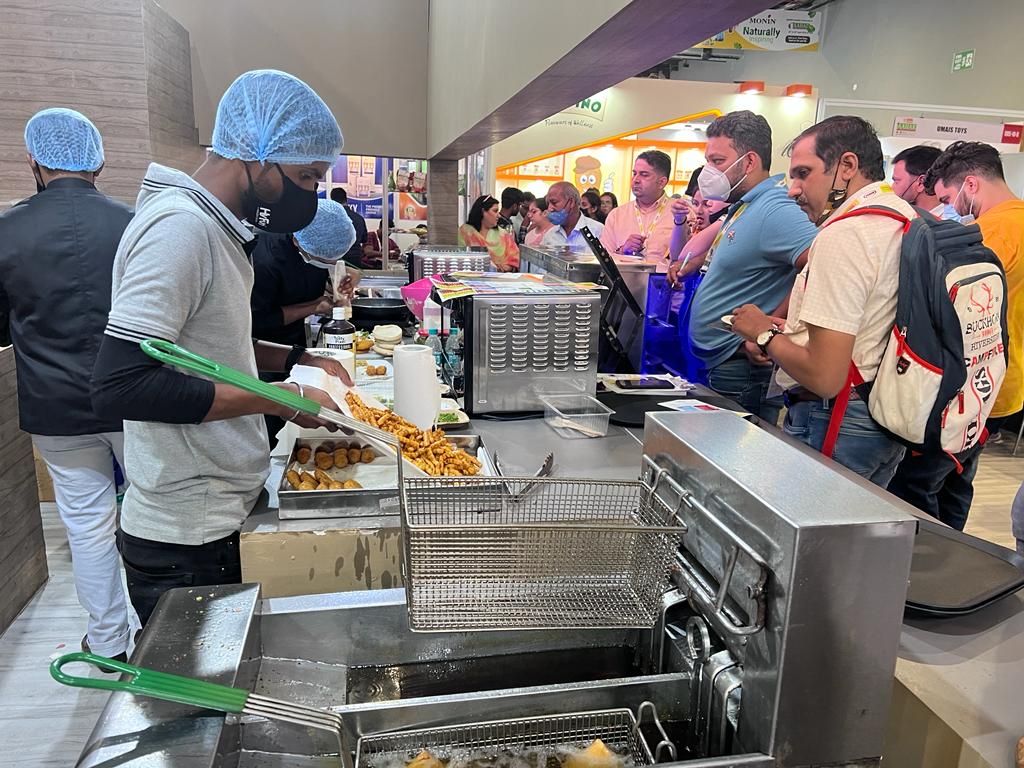
That is why Metro hosts multiple demos all the time every day and has no advertising budget.
Essentials are hidden
This is the pure Walmart strategy. Most of the times for majority of people, the essentials are kept at the exit of the store. We go around, trespass everything, our impulses urges us to buy unnecessary things rather than the necessary ones.
Remember that packet of biscuit you went in for? Well, it is often hidden near the back or end of the store. The reason for this is that the supermarket want you to walk through the whole store just to get them –tempting you to buy other items on offer as you make your way to the item you came in for.
Top most festival Products FMCG consumers search today
World Wide Festive Trends Decoded What Indian festive consumers seek...
Read MoreHow right selection of FMCG Salesmen improves brand market share
How can FMCG Companies improve salesman’s technique in order to...
Read MoreHow most searched Fmcg sales and marketing words help newbie salesman
Why undestand FMCG sales management? Sales management is the process...
Read MoreHow Successful FMCG Salesman Starts his Day, a guide
How does one become a good sales executive in the...
Read More


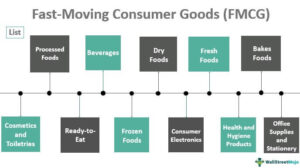




Thank you for sharing this wonderful post!Robotic software consulting